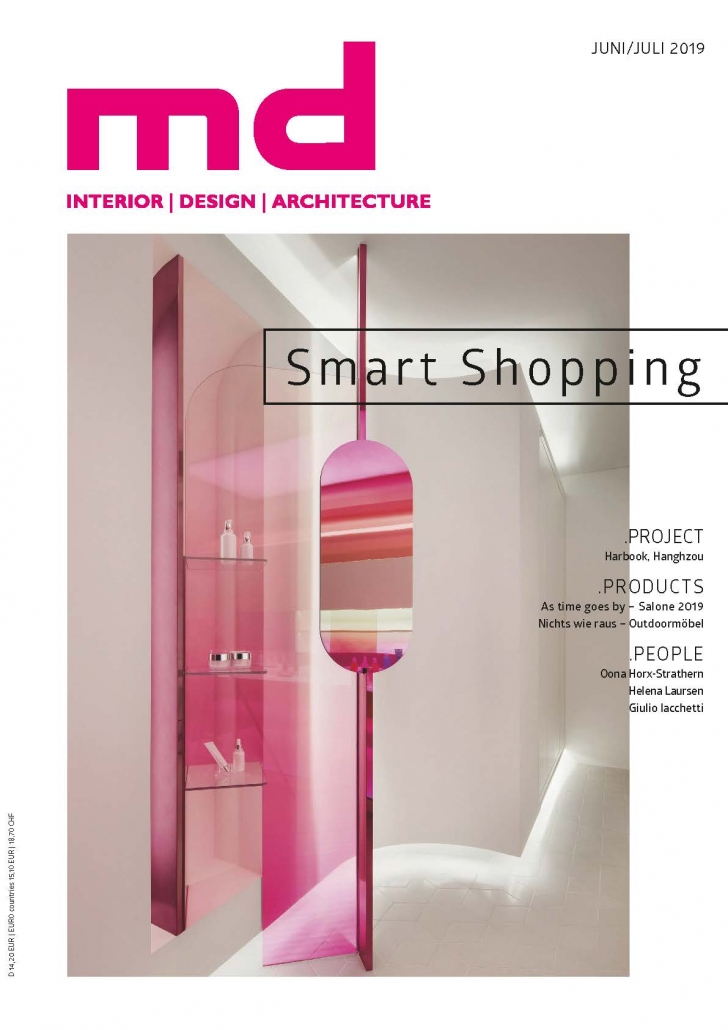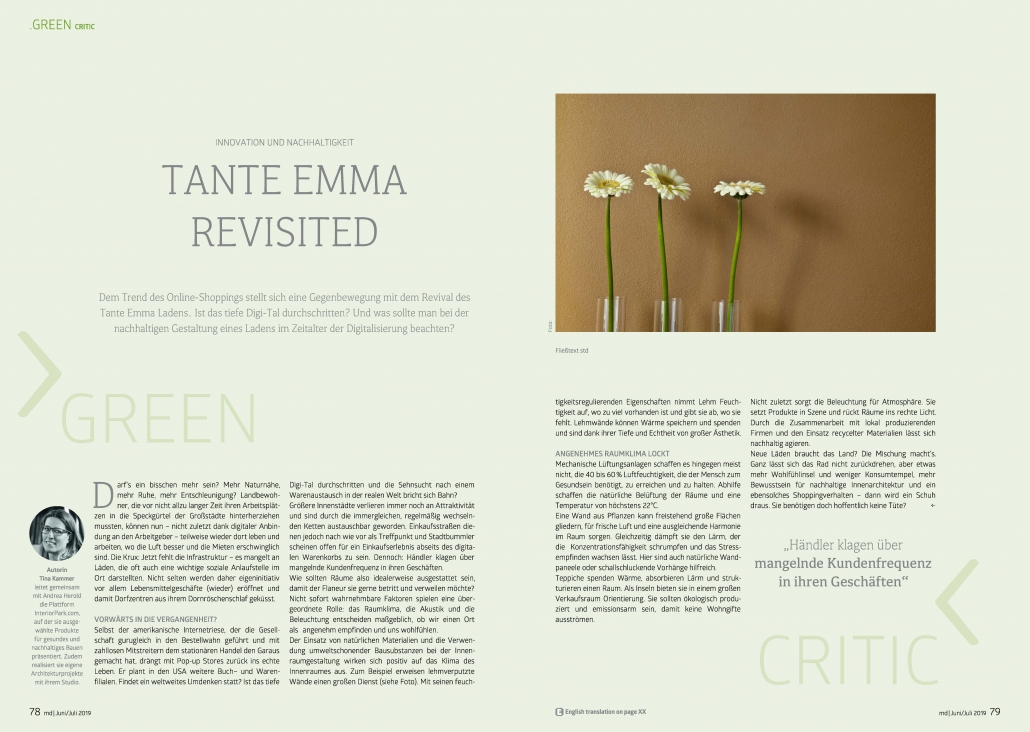md Magazine
Interior | Design | Architecture
Edition 6./7.2019
Green Critics Column InteriorPark. on pages 78-79
Convenience stores revisited
How about a little bit more? More proximity to nature, more peace and quiet, more deceleration? Rural dwellers who not long ago had to commute to their workplaces from the affluent suburbs of the big cities may now, in part, live and work again where the air is better and rent is more affordable – not least thanks to the digital connection to their employer. But the problem is that infrastructure is limited. There are not enough shops and these used to often also act a local, important social point of contact. So, based on individual initiatives, grocery stores are being re-opened in many places and village centers are brought back to life.
Moving forward to the past?
Even American Internet giant Amazon, having enticed society into a mania of purchasing orders like a spiritual leader and, together with innumerable other companies, leaving stationary trade behind. However, pop-up stores are vigorously giving empty retail space a new lease of life. Additional book and goods branches are planned in the USA. Is there a global shift in thinking? Have we left the deep digital slump behind us, and is a longing for exchanging products in the real world breaking through?
Larger city centers have still not taken the crucial step as everyday retail space is still dominated by well-known chains. But shopping streets are still meeting points and city center visitors seem to be open for shopping experiences away from the digital shopping basket. Nevertheless, retailers are complaining about insufficient passing trade in their shops.
How then should spaces be ideally designed so that shoppers will enter them with pleasure and remain for a while?
There are some factors which are not so obvious at first glance, yet they play a dominant role: interior atmosphere, acoustics and lighting will be crucial in whether we find a place agreeable and feel comfortable.
Natural materials and environmentally friendly building materials used for interior decoration have a positive effect on the atmosphere inside. Plastered walls, for instance, serve a good purpose. Plaster absorbs a considerable amount of moisture and releases it back into the atmosphere is levels drop. Plastered walls can store and radiate heat and they are of great esthetic value thanks to their depth and authenticity.
A pleasant indoor atmosphere has an enticing effect
In most cases, mechanical ventilation systems do not succeed in achieving and maintaining levels of 40 to 60 per cent air humidity which we need as humans need to stay healthy. A solution is ventilating spaces naturally and keeping the temperate below 22° C.
Freestanding plant walls may be used to subdivide large areas and at the same time provide fresh air and a balancing harmony in the room. They will also absorb disruptive noise that increases people’s perception of stress. Natural wall panels and sound-absorbing curtains can also be useful in this context.
Carpets convey warmth, absorb noise and structure a space. Laid out as islands, they offer orientation in large salesrooms. They should be manufactured ecologically and be low in emissions to prevent indoor toxins from being released.
Last but not least lighting improves the ambience. It provides the right setting for products and delves spaces in the right light. By co-operating with locally producing companies and using recycled materials sustainability can also be achieved.
Do we really need new shops? It’s the mixture that makes the difference. We cannot turn the clock back completely, but we would like shops to rather be
a feel-good shrine to consumerism. There should be more awareness of sustainable interior design and sustainable shopping behavior. That’s the goal of the game.
You don’t need a bag, do you?




